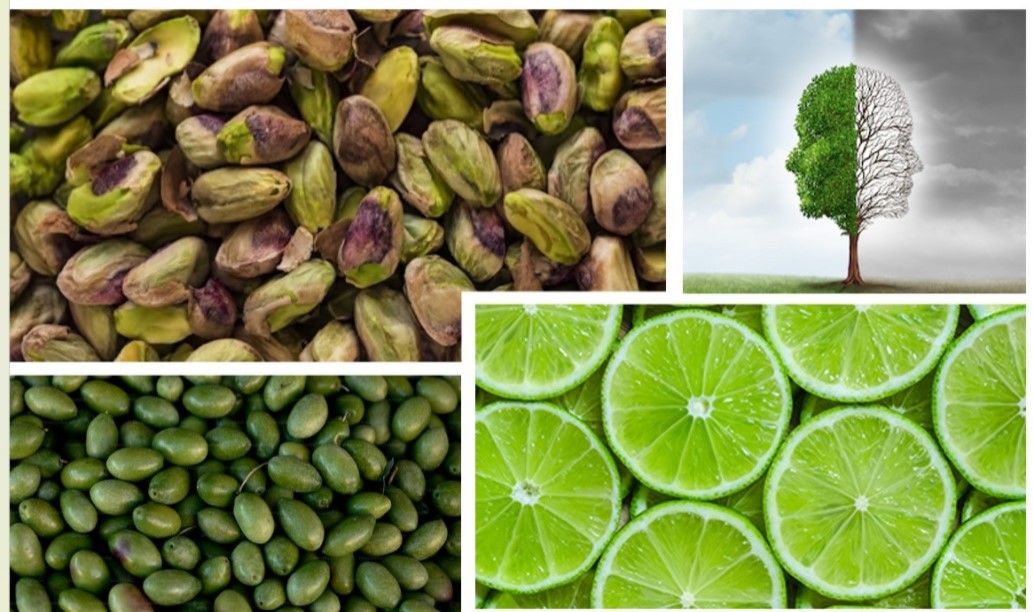Green and Wellness
Green has an inherent association with nature, and as such, it evokes a sense of balance, renewal, and tranquillity. Numerous studies have shown that exposure to green spaces and environments can significantly reduce stress levels and promote mental clarity.
One of the core theories supporting this is biophilia, which posits that humans have an innate affinity for nature and natural elements, including the colour green. In a built environment, this translates into green being an optimal choice for interior spaces where well-being and relaxation are priorities.
The colour green has a scientifically documented calming effect. A 2010 study in the Journal of Environmental Psychology found that participants exposed to environments dominated by green hues experienced lower levels of anxiety and tension. The calming nature of green is often attributed to its association with stability and the natural world. In interior design, soft green tones like sage or olive can transform a space into a restorative haven, ideal for bedrooms, lounges, or any area designed for relaxation and stress reduction.
Cognitive Benefits and Focus Green is also known to enhance cognitive function, particularly in terms of creativity and focus. A 2012 study by Lichtenfeld et al. in the Personality and Social Psychology Bulletin revealed that the colour green enhances creative performance.
This effect stems from green’s subconscious association with growth and vitality, which stimulates innovative thinking. Designers can leverage this insight by using green in workspaces, classrooms, or studios where mental clarity and creativity are essential.
Physiological Effects Beyond its psychological impact, green has measurable physiological benefits. Studies have shown that exposure to green can reduce heart rate and blood pressure, creating a physically calming environment.
A 2016 white paper from the Centre for Health Design highlighted the role of green in healthcare environments, noting that patients exposed to green colours and elements recovered more quickly and reported lower levels of pain and anxiety. This is particularly relevant for healthcare facilities, wellness centres, and other spaces where recovery and health are central objectives.
The precise shade of green used in an interior space plays a critical role in determining its effect on the occupants. Lighter, muted shades such as mint or pistachio are frequently used to evoke a sense of calm and simplicity.
These shades are ideal for environments where relaxation is key, such as bedrooms or quiet reading areas. As noted in The Architecture of Happiness by Alain de Botton, these shades create a serene environment that encourages mindfulness and introspection, particularly when complemented by natural light.
Darker greens, such as emerald or forest green, add a sense of luxury and richness to a space. According to Janet Best’s Colour Design -Theories and Applications, these deeper greens can be used to create an atmosphere of sophistication and contemplation, making them suitable for formal spaces like dining rooms, libraries, or executive offices. Despite their more intense hue, these darker greens maintain a calming and grounding effect due to their natural origins.
Biophilic design is a concept that aims to reconnect humans with nature through architectural and design elements. One of the most effective ways to achieve this connection is through the use of green.
The Terrapin Bright Green white paper (2014) on biophilic design presents compelling evidence that incorporating green into indoor spaces can reduce stress, enhance cognitive function, and improve emotional well-being. This is particularly important in urban environments where direct access to nature may be limited. The strategic use of green in such settings—whether through paint, plants, or textiles—can simulate the restorative effects of the natural world.
While green’s association with nature is universally recognised, its cultural interpretations can vary, which must be considered when designing for diverse populations. In many Western cultures, green symbolises renewal, fertility, and health, while in some Eastern cultures, it may carry different connotations, such as luck or even illness.
Colour – A Natural History of the Palette by Victoria Finlay explores these variations and provides a historical context for green’s symbolism across different cultures. For designers, understanding these nuances ensures that the use of green aligns with the intended emotional and cultural narrative of a space.
As the focus on wellness in interior design grows, green will continue to play a pivotal role. Its scientifically backed benefits, from reducing stress to enhancing creativity, make it indispensable for creating environments that prioritise human health and emotional well-being.
As research in environmental psychology and biophilic design expands, our understanding of green’s influence on human behaviour will likely deepen, offering even more opportunities for its effective application in wellness-centred spaces.
Further Reading and Research
For those interested in exploring the scientific foundation of green’s role in wellness and interior design, the following studies, books, and white papers provide in-depth analyses and empirical data:
Journal of Environmental Psychology (2010).
“The Restorative Effects of Green Spaces on Mental Health.”
Lichtenfeld, S., Elliot, A. J., Maier, M. A., & Pekrun, R. (2012).
“Green Facilitates Creativity: Evidence for an Environmental Effect on Creativity.” Personality and Social Psychology Bulletin.
Centre for Health Design (2016).
“The Impact of Nature and Green Design on Patient Recovery.”
Terrapin Bright Green (2014).
“14 Patterns of Biophilic Design: Improving Health and Well-being in the Built Environment.”
Birren, F. (1969).
Color Psychology and Color Therapy. McGraw-Hill.
Best, J. (ed.) (2017).
Colour Design: Theories and Applications. Woodhead Publishing.
Finlay, V. (2002). Colour: A Natural History of the Palette. Random House.

